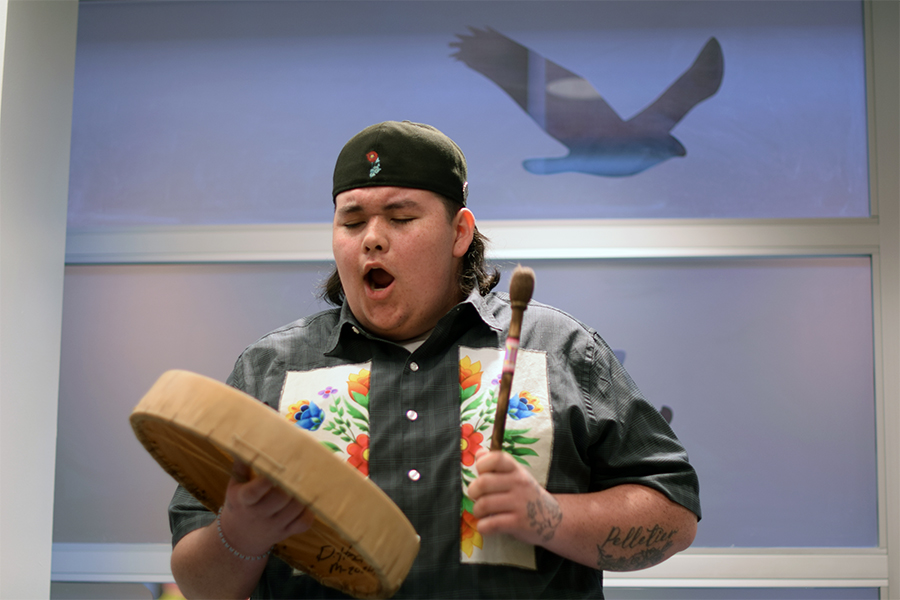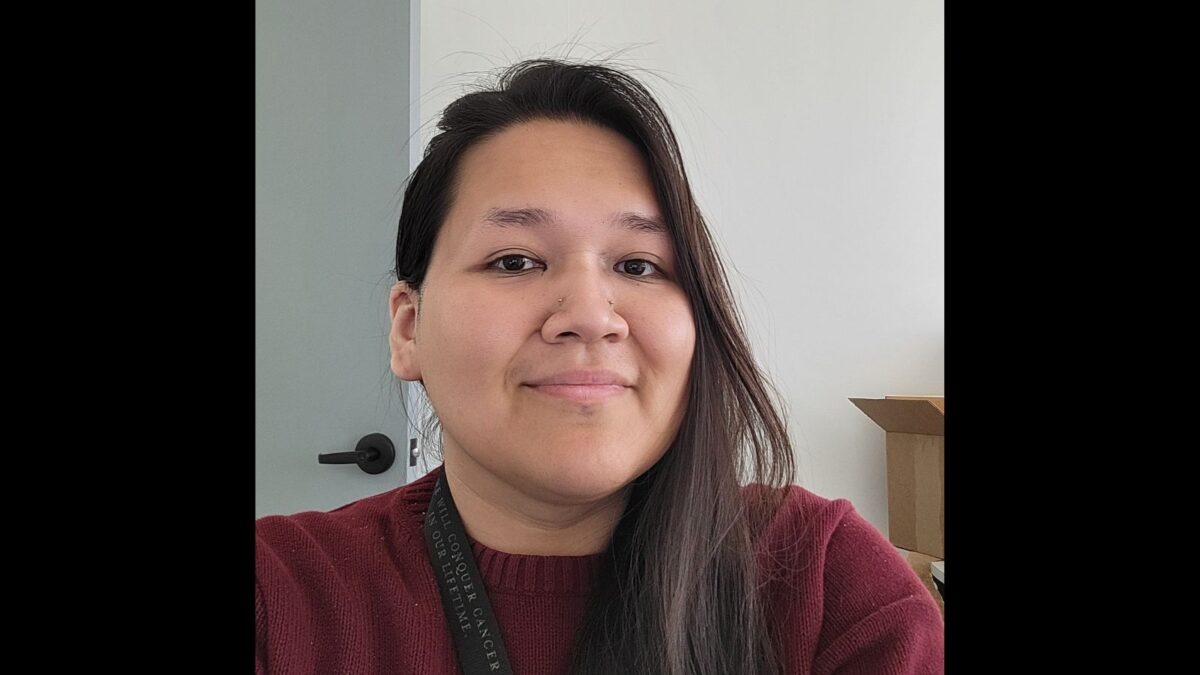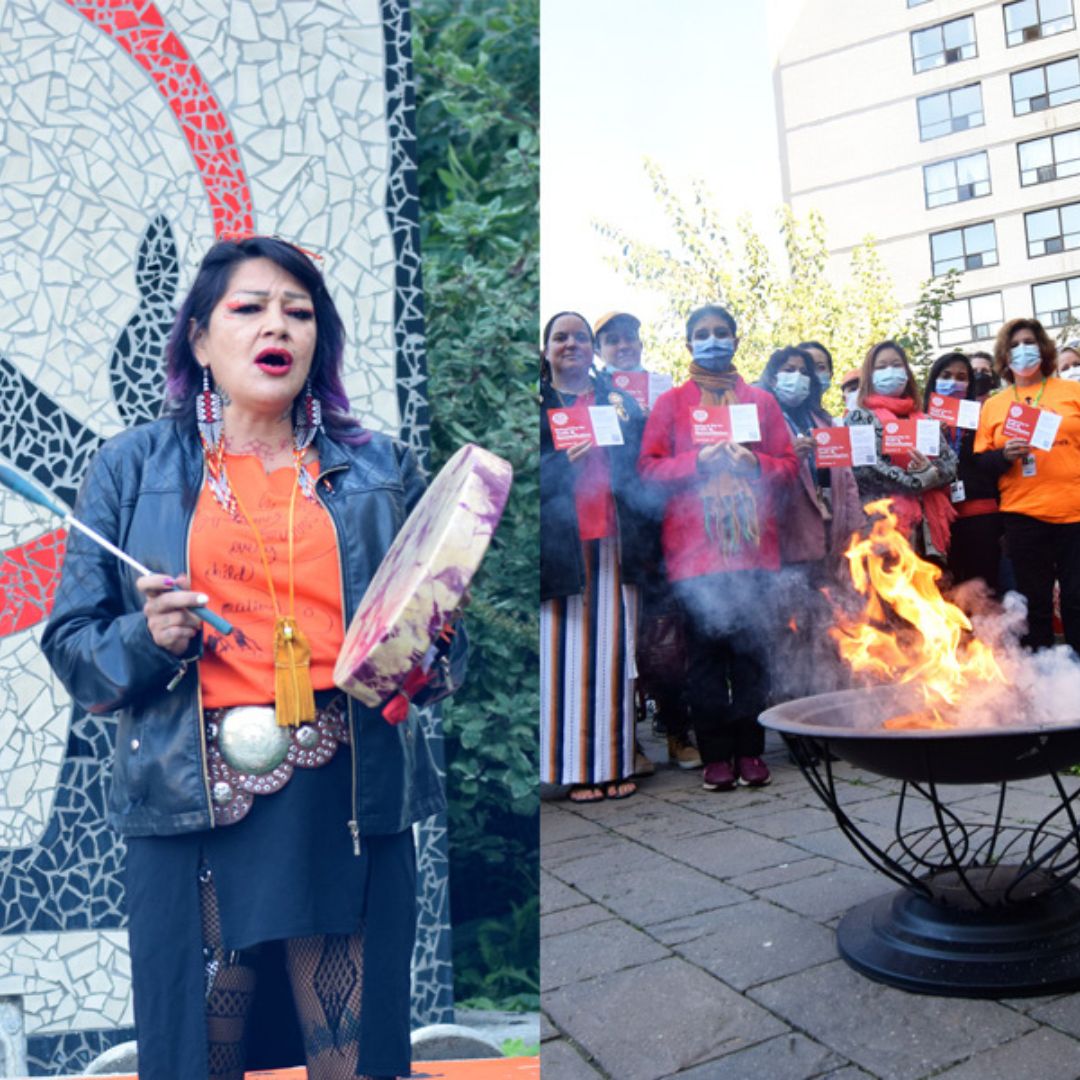“There’s a long history of knowing that health care institutions aren’t places we go to get care or help,” says Dr. Mike Anderson, Strategic Lead for the Indigenous Health Program at UHN. “We often get harmed in these spaces, and we need to challenge that narrative.” (Photo: UHN)
It was almost 30 years ago, early in Dr. Mike Anderson’s medical career, when he overheard a conversation that still impacts him today.
He was a 23-year-old medical student in Kingston, Ont. when he admitted a sick First Nations child who was flown in from a remote Northern community. Mike overheard the attending physician discussing the case.
“As soon as Anderson’s done admitting this child, we won’t see mom and dad for a week,” Mike recalls the physician saying. “They’ll be gone, they’ll be drunk, and they’ll come pick up their child when we’re done with them.”
Mike says the medical staff had never met the family and knew nothing about them.
“The implication was that they were bad parents, they must have substance use disorders, and stigmatized them into being inherently responsible for their child having what turned out to be a respiratory syncytial virus infection,” he recalls.
That moment was proof for Mike that all the stories he was told by his Mohawk family growing up were true – he needed to hide who he was as an Indigenous trainee, because medical institutions were not safe spaces for him.
“I certainly grew up knowing that these weren’t safe places for Indigenous folks, our families, our communities taught us that,” he explains. “There’s a long history of knowing that health care institutions aren’t places we go to get care or help.
“We often get harmed in these spaces, and we need to challenge that narrative.”
While Mike learned to hide who he was in order to surpass the systemic barriers in becoming a doctor, he says things have come a long way since then. Now the Strategic Lead for the Indigenous Health Program at UHN, he aims to improve access to high-quality health care for Indigenous communities by establishing positive relationships.
“There are lots of barriers to care, and a lot of the things that affect Indigenous people’s health are the systems in which we live,” he says. “At the root of it, it’s really about fostering a healthier relationship between Indigenous communities and the health care system.”
In 2015, Mike stepped away from surgical oncology to pursue palliative and end-of-life care training and practice. His goal was to deepen his understanding of Indigenous concepts of death and dying and how to improve relationships with Western health care systems.
Mike believed creating a space in health care where both the Indigenous and medical parts of himself could exist simultaneously was a significant step towards building respectful relationships between two different worlds.
“That was the palliative care exercise for me, finding spaces in health care where Western medicine and Indigenous ways of thinking and well-being can talk to each other,” Mike says, noting the narratives surrounding Indigenous communities are often negative and deficit-based. “Here in health care, it’s more helpful to talk about the strengths that exist in Indigenous communities and Indigenous thought.”
Leonard Benoit, Indigenous Patient Navigator and Mike’s colleague at UHN, says Mike is doing a great job of removing systemic barriers and “Indigenizing” the health care system.
“The Indigenous Health Program is about transformative medicine,” Leonard says. “It’s about bringing the ways of Indigenous people into health care and making sure it’s accessible and equitable so that Indigenous folks can actually have treatment the way they decide, as opposed to it being told to them.
“Mike is an amazing doctor, leader and clinician, and is always talking about how we can ‘Indigenize’ health care and meet Indigenous folks exactly where they are.”
For example, Mike says the concept of death in Western culture is very medicalized with a prominent focus on the physical body, when realistically, many people see their end-of-life experience from a more holistic perspective, one that holds true to Native culture.
“Death is more spiritual and existential than anything, and it’s an incredible opportunity to heal other parts of yourself, like your spirit – a domain the medical system rarely takes into consideration,” he explains.
Mike often asks elders what the word for “death” in their native language is, and many of them don’t have one; rather, they have expressions representing new beginnings or rebirth, as opposed to being constructed as an end.
“I often find, when there are spaces where you can actually have these effective conversations, many patients step back and say they prefer the Native way of framing the end-of-life experience,” he says.
‘We can co-exist effectively together’
His work in palliative care isn’t only helping foster positive relationships between the Western health care system and Indigenous communities, but is simultaneously paving the way for an era of health care based on peace, respect, friendship and co-existence – something Mike says is key to achieving Indigenous health and well-being.
“The point is, how do you have a conversation between two entities that see the world differently, but share this space together, and want to do so in harmony?” he says. “We have to have conversations in that space in between these different worldviews, and when you do it with peace, friendship and respect, you have a respectful dialogue.
“I think that’s a good approach, even to health care.”
While the Indigenous Health Program has and continues to make ground-breaking progress for Indigenous communities, Leonard says there’s still a long way to go.
“We’re 150 years behind the ball,” he says. “We’ve got to realize that our practices, our ceremonies and our medicine do have a place in health care.
“We need to be able to access all those things and provide the best possible care to the person as they as see it.”
Mike agrees, saying it’s nobody’s place to validate or invalidate how others see the world. Rather, the goal is to find a way to live together by listening, by being respectful, and by being allies.
“We don’t always have to agree, we don’t always have to see things the same way,” he says, “But we can co-exist effectively together.”


